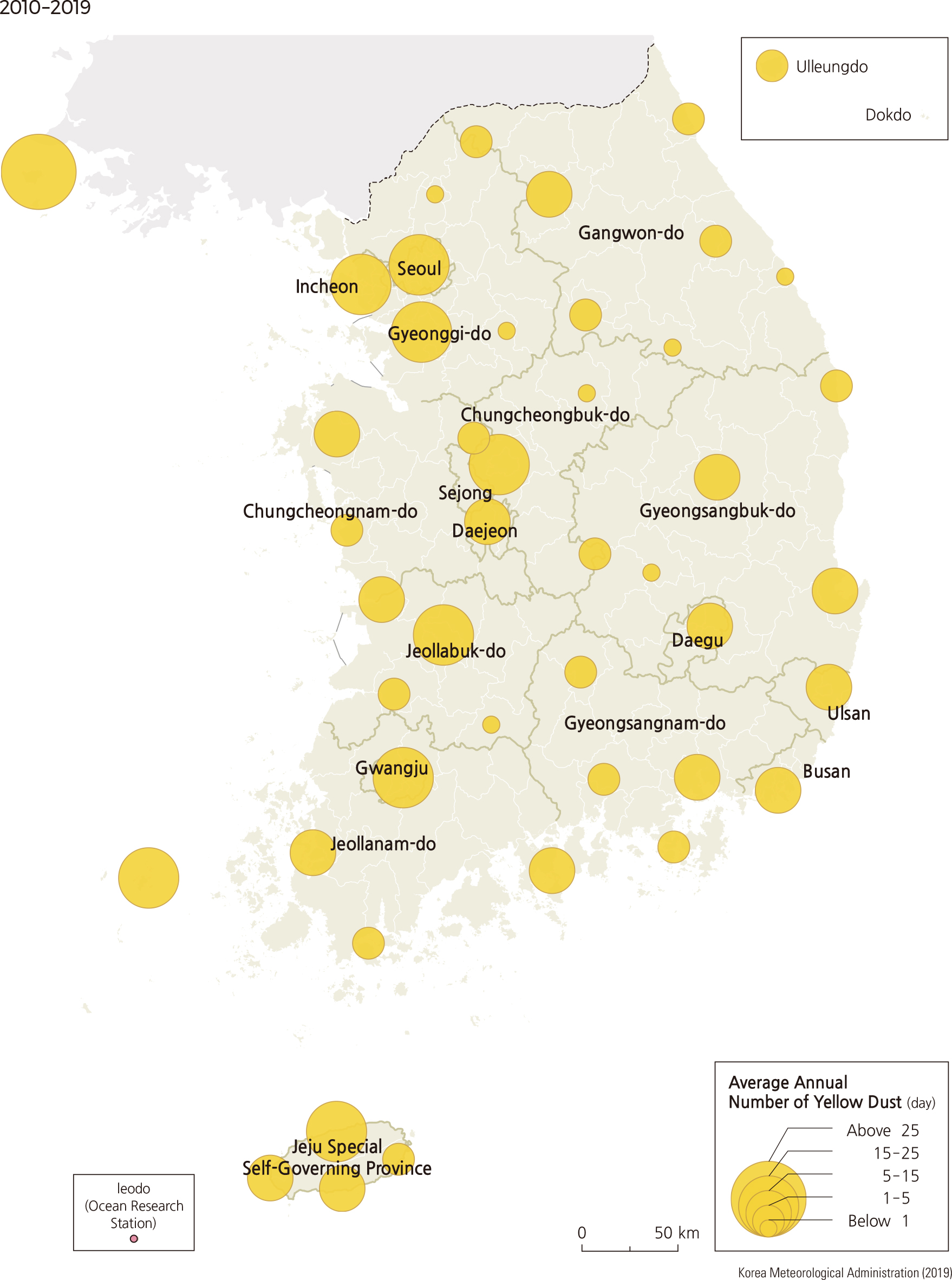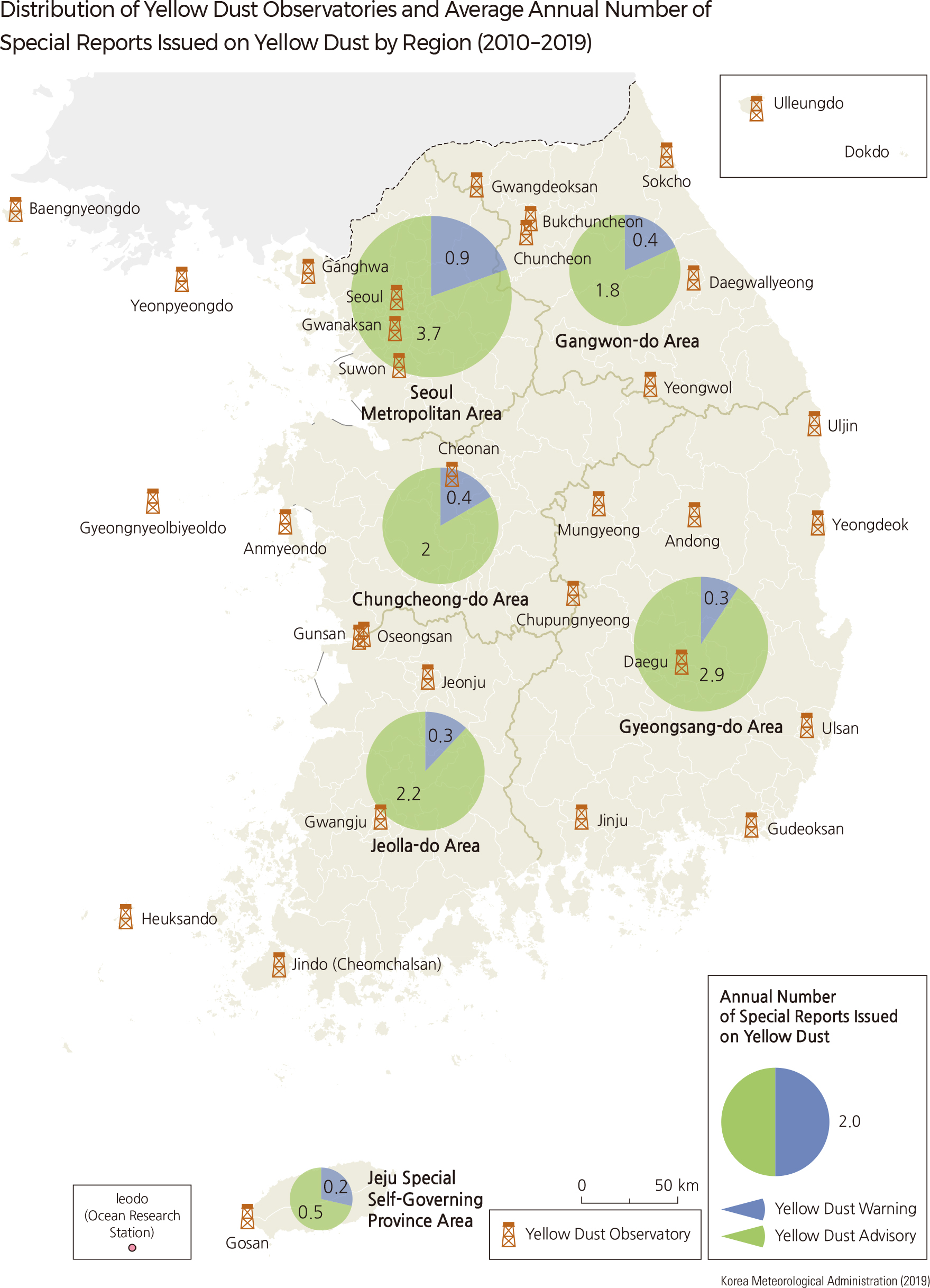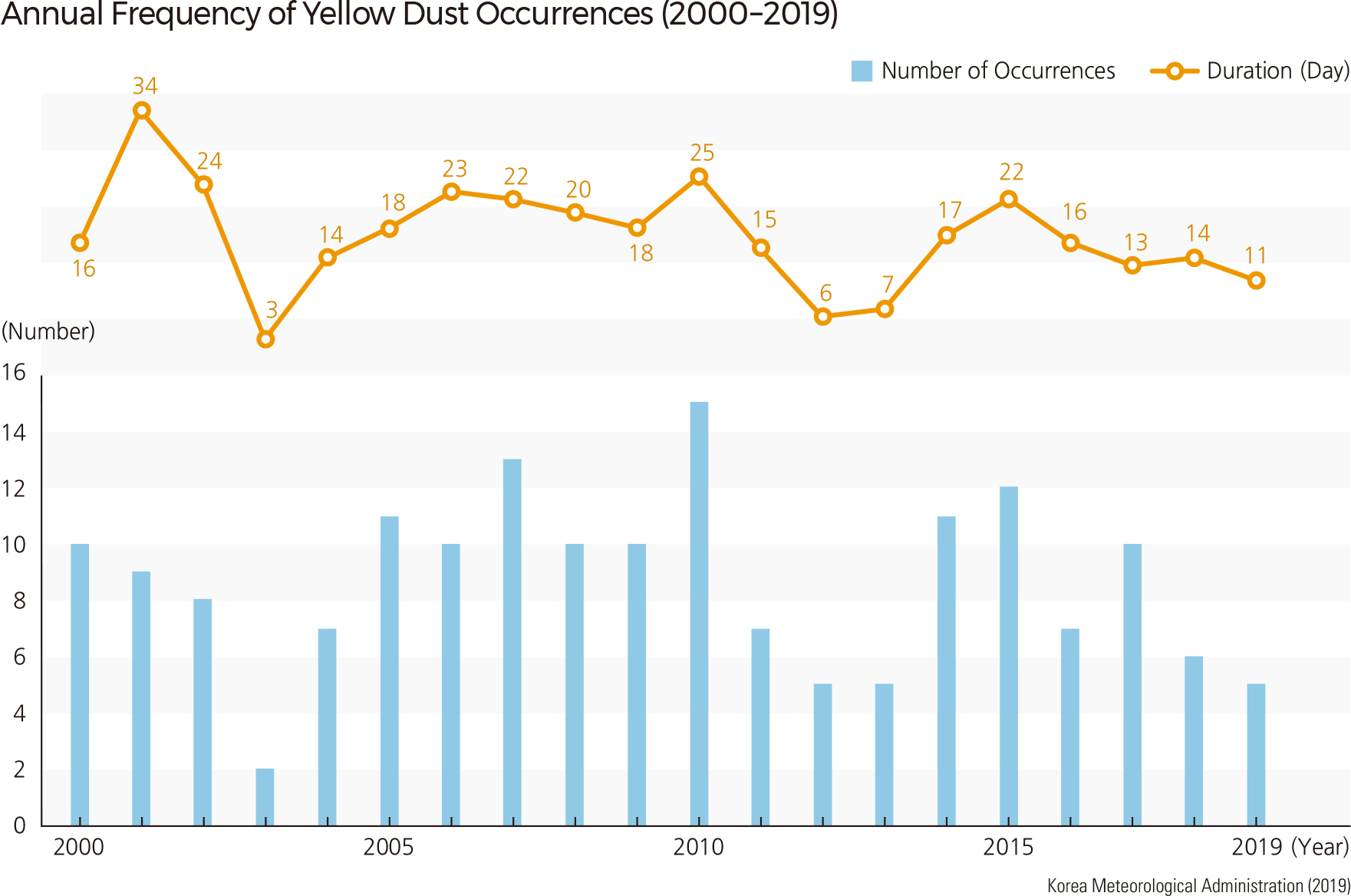English II 2020
Yellow dust occurs when fine sand dust is blown by the wind from the northern part of China and dry/red clay zones of Mongolia and spreads, covering the sky and blanketing certain regions. Yellow dust generally occurs from March to May when cyclones are active. Sometimes, the dust reaches North America via strong upper-level west winds that pass over Korea, Japan, and the Pacific Ocean. When yellow dust occurs, sunlight is blocked by airborne particulates, and the sky appears yellowishbrown. Yellow-brown dust also covers the land.
The dust causes various problems in human health, agriculture, industry, transportation, and the oceans. Although Korea and Japan are far from the main dust sources, they are directly impacted by the dust. The intensity and number of yellow dust days have been rapidly increasing since the 1990s. The number of yellow dust days in Seoul has increased as follows: 28 days (1971–1980), 39 days (1981–1990), 77 days (1991–2000), and 122 days (2001–2010). The number of events in the 2000s is four times greater than that of the 1970s.
The yellow dust special weather reports issued by the Korea Meteorological Administration are classified as yellow dust advisories and yellow dust warnings. The fine dust warning replaced the yellow dust warning in 2017. The fine dust advisory is issued when an hourly average particulate matter (PM10) density of 300 μg/㎥ is expected to last for more than two hours. A yellow dust warning is issued when an hourly average particulate matter (PM10) density of 800 μg/㎥ is expected to last for more than two hours.
|



